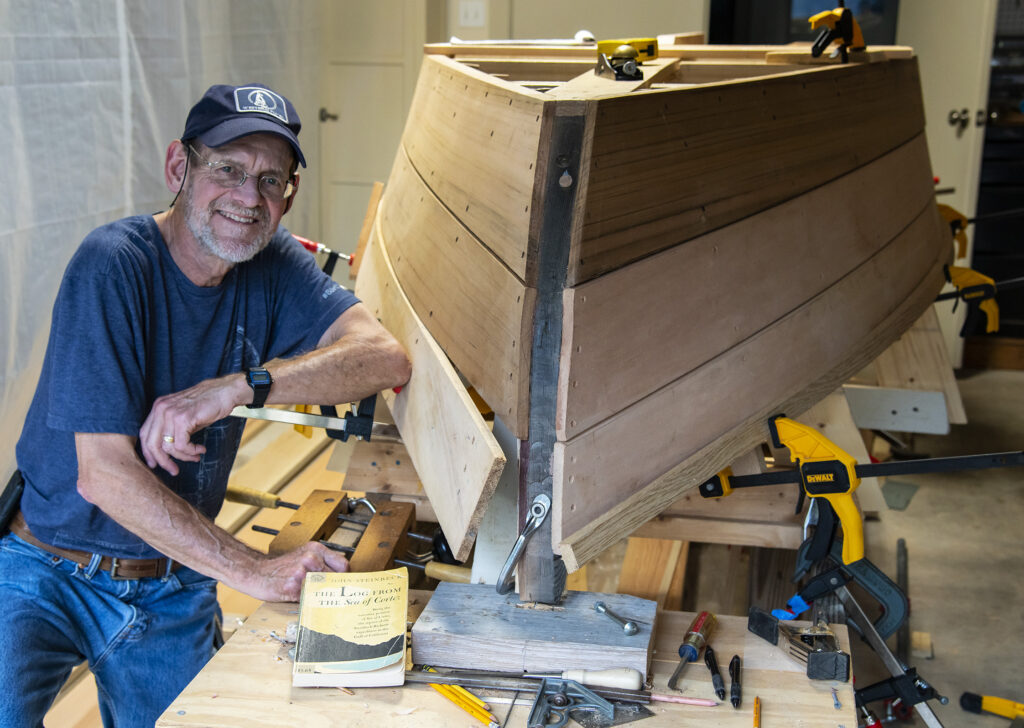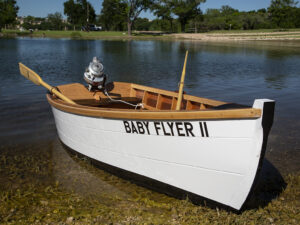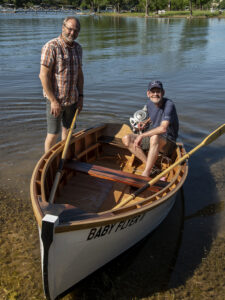We often hear from people with unique stories about how The Log from the Sea of Cortez, the expedition, and the lessons Steinbeck and Ricketts share have altered the course of their lives. In this blog, Rom Welborn, a long-time friend of the Western Flyer Foundation, shares his story with us.

By Rom Welborn
The whole trajectory of my life was set in motion by a high school English professor whose literature required reading list included The Grapes of Wrath and Of Mice and Men. I immediately liked Steinbeck’s viewpoint, and that led to a senior English term paper where my additional reading and research brought me to The Log from the Sea of Cortez. Those first two novels undoubtedly helped instill more compassion and tolerance in my nascent view of the world, but the latter opened my eyes to the wholeness and connectedness of things, and a way to explore that universe through the study of biology and ecology. Nevertheless, I took a different, more potentially “profitable” career path in my chosen college, but found myself floundering and full of doubt near the beginning of my senior year. That summer, I turned to reading and rereading a number of books I truly enjoyed, and the one that stood out once again was The Log from the Sea of Cortez. That inspired me to take the rather drastic step of changing schools, changing my major to biology/ecology, and following my passion to a biologist career with the Texas Parks & Wildlife Department.
Over the years since that rewarding change in my life, I have felt compelled to stay in touch with the Sea of Cortez legacy by making “pilgrimages” back to Monterey and Salinas in the 1970s and 1990s, and even visiting Baja California twice in the 1980s for whale watching and tide pooling in the Sea of Cortez. But the most exciting moment came a few years ago when I learned quite by chance that John Gregg had located and purchased the expedition vessel Western Flyer. His decision to have the boat restored and used “to stir curiosity” as an outreach program for underserved students along the majority of the Pacific coast from Baja to Alaska fascinated me immediately. What a great way to honor the accomplishments of Steinbeck and Ed Ricketts and perhaps inspire another generation of scientists to continue unraveling the mysteries of our universe (“from the tide pool to the stars”).

For me personally, the need to connect with his project and be supportive was irresistible, given the influence of the book on my life. So, I have been following its progress closely, keeping in touch with Chris Chase, the project director. That has included visiting Washington state for extensive periods and visiting the Port Townsend shipyard often to observe the work. As a means to feel even more connected, I also started my own boat project at my home in Texas: construction of a “Baby Flyer,” an approximate replica of the ten-foot wooden skiff that plays an important and often comical role in the story. Having had no experience with boat building, it was definitely a challenge, but working carefully with extensive long-distance advice and support from Chris, the form of a boat emerged in my garage. And to make it complete, I located a good candidate for the evil “Hansen Sea Cow” outboard motor whose erratic behavior irritates the whole crew throughout the expedition.

Sunday, April 14, 2019, after more than 500 hours of work, we christened and launched the Baby Flyer II in nearby Lake Travis, just north of Austin, Texas. My wife Pam splashed water from Puget Sound on the bow, brought by Chris from Port Townsend, Washington, in front of the 37 people that attended. I think this was an appropriate baptism for a Texas model of the boat originally built and used in that region. The day was beautiful and calm, and my 1937 Johnson Seahorse motor obtained on eBay, the “Sea Cow” of the Steinbeck tale, was lured into starting and flawlessly powering the ten-foot skiff around the protected cove we had chosen.
Seventy-nine years earlier, April 14 also fell on a Sunday, as the Western Flyer plunged into the wind and waves heading for San Diego and the end of the expedition only two days away. Just as Steinbeck muses about the meaning of his and Ricketts’ little expedition on those final pages of the book, I also found personal meaning in the process of building and launching a boat for the first time. It is my hope that the Baby Flyer II can eventually be used to benefit the Western Flyer project so that my efforts can, in the Steinbeck way, become one with the larger thing.
Posted in Blog, Stories from the Community